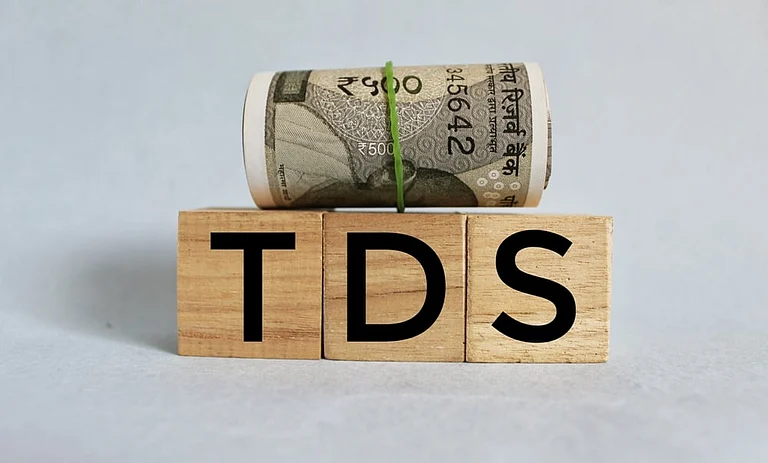As the new financial year 2025-26 has begun, taxpayers in India should familiarise themselves with the latest income tax-related updates such as any changes in tax slabs, deductions, and exemptions to ensure effective tax planning.
The Budget 2025 brought changes aimed at making the new tax regime (NTR) more attractive. The new regime provides a more streamlined option for taxpayers while phasing out many deductions that are available under the old tax regime (OTR).
Let’s understand the latest updates in income tax with the help of key frequently asked questions (FAQs), particularly surrounding the income tax slabs for FY 2025-26.
1. What Are the Income Tax Slabs for FY 2025-26?
The Union Budget 2025 rolled out some key changes which will impact how you approach your finances. The most notable change, also viewed as a major relief for the middle class, was an increase in the zero-tax income threshold under the NTR to reduce tax liability.
The revised slabs for FY 2025-26 are as follows:
Up to Rs 4 lakh: Nil
Rs 4-8 lakh: 5 per cent
Rs 8-12 lakh: 10 per cent
Rs 12-16 lakh: 15 per cent
Rs 16-20 lakh: 20 per cent
Rs 20- 24 lakh: 25 per cent
Above Rs 24 lakh: 30 per cent
According to the new tax slabs, taxpayers with a taxable income of up to Rs 12 lakh (excluding capital gains) will find themselves paying zero tax as a result of the hike in rebate under Section 87A. The salaried people will also get a standard deduction of Rs 75,000 (hiked in budget 2024). This implies that those having an income of up to Rs 12,75,000 will not be required to pay any income tax under the new system.
Tax slabs under the Old Tax Regime
Since no changes were announced for the old regime, its income tax slab rates remain the same allowing for multiple deductions and exemptions such as HRA, LTA, and 80C. The slab rates are as follows:
Up to Rs 2.5 lakh: Nil
Rs 2.5 lakh to Rs 5 lakh: 5 per cent
Rs 5 lakh to Rs 10 lakh: 20 per cent
Above Rs 10 lakh: 30 per cent
2. What was the earlier limit of income for nil-tax payments?
Previously, the limit of income for nil tax payments was Rs 7 lakh. With changes announced in Budget 2025, this limit has been increased to Rs 12 lakh. As per FAQs by the Central Board of Direct Taxes, around one crore assessees who were earlier required to pay tax varying from Rs 20,000 to Rs 80,000 will be now paying zero tax.
3. What about the Standard Deductions?
Under the new tax regime, a standard deduction of Rs. 75,000 is available. Because of this, a salaried taxpayer will not have to pay any tax in cases where their income before the standard deduction is less than or equal to Rs 12,75,000.
A standard deduction of Rs 50,000 is available in the old regime.
4) What are the Marginal Relief and Rebates?
Taking the recent changes into account:
Rebate is the deduction from tax which is available to taxpayers having income up to Rs 12 lakhs (under the new tax regime).
Marginal relief ensures that the additional tax liability due to a slight increase in income does not exceed the excess income itself. This protects taxpayers from the additional burden of high tax liability due to minor increases in taxable income.
Moreover, the marginal relief is applicable only under the New Tax Regime for resident taxpayers.
Taxpayers having income marginally higher than Rs 12 lakh will not have to pay tax more than the income in excess of 12 lakhs.
For example, if a taxpayer has an income of Rs 12, 10,000, in the absence of marginal relief, the tax works out to be Rs. 61,500 (i.e. 5% of Rs 4 lakh + 10% of 4 lakh and 15% of Rs 10 thousand).
However, due to marginal relief, the amount of tax to be actually paid will be Rs 10,000.
5. What is the total income till which marginal relief is admissible?
The total income till which marginal relief is available is nearly Rs 12,75,000. Anyone who has opted for the new regime of taxation will not be required to pay any tax on any income up to Rs 12 lakh per annum, other than special rate income by way of a rebate of Rs 60,000 under 87A.
Salaried Individuals can get a standard deduction of Rs 75,000. So if your Salary is Rs 12,75,000 then after the standard deduction of 75,000, your income will be Rs 12,10,000 and your tax liability will be Rs. 60,000 but due to a rebate of 60,000 under section 87A your ‘Net Tax Liability’ will be NIL.
On the other hand, if your income is Rs 12.85 lakh then after standard deduction of Rs 75,000 - the Taxable Income will be Rs 12,10,000 and Tax Liability will be Rs 61,500. Here, no 87A Rebate will be allowed on it and you will have to pay Rs. 61,500 as tax.
The change in Tax slab rate is supposed to give a 5 per cent to 15 per cent tax reduction to those with income more than 12 lakhs depending upon case to case.
6. Which tax regime should you choose?
The choice between the old and new tax regime depends on your financial situation. For instance:
If you claim multiple deductions (such as 80C, 80D, HRA), the old tax regime may be beneficial.
If you prefer lower tax rates with minimal deductions, the new regime might be a better option.
7. What are the key tax-saving strategies?
Taxpayers should first and foremost opt for the appropriate tax regime based on their needs. To avail the best of deductions and exemptions OTR is beneficial, however, those who want more take-home salary with a lesser tax liability can consider the NTR.
If you have opted for the old regime, maximise deductions under Section 80C (for various instruments including life insurance, equity-linked savings scheme, Public Provident Fund or PPF and so on), 80D (for health insurance), and 24(b) for interest paid towards a home loan.
Invest in tax-free instruments such as PPF, NPS, and ELSS
Make sure to factor in the capital gains taxability by using indexation benefits and exemptions
Understanding the income tax slabs and key provisions for FY 2025-26 is important for effective tax planning as the new financial year has started. Taxpayers should make sure to evaluate their income, deductions, and financial goals to choose the best tax-saving strategies.
Buy Outlook Money March 2025 Magazine Issue on Amazon Here.













